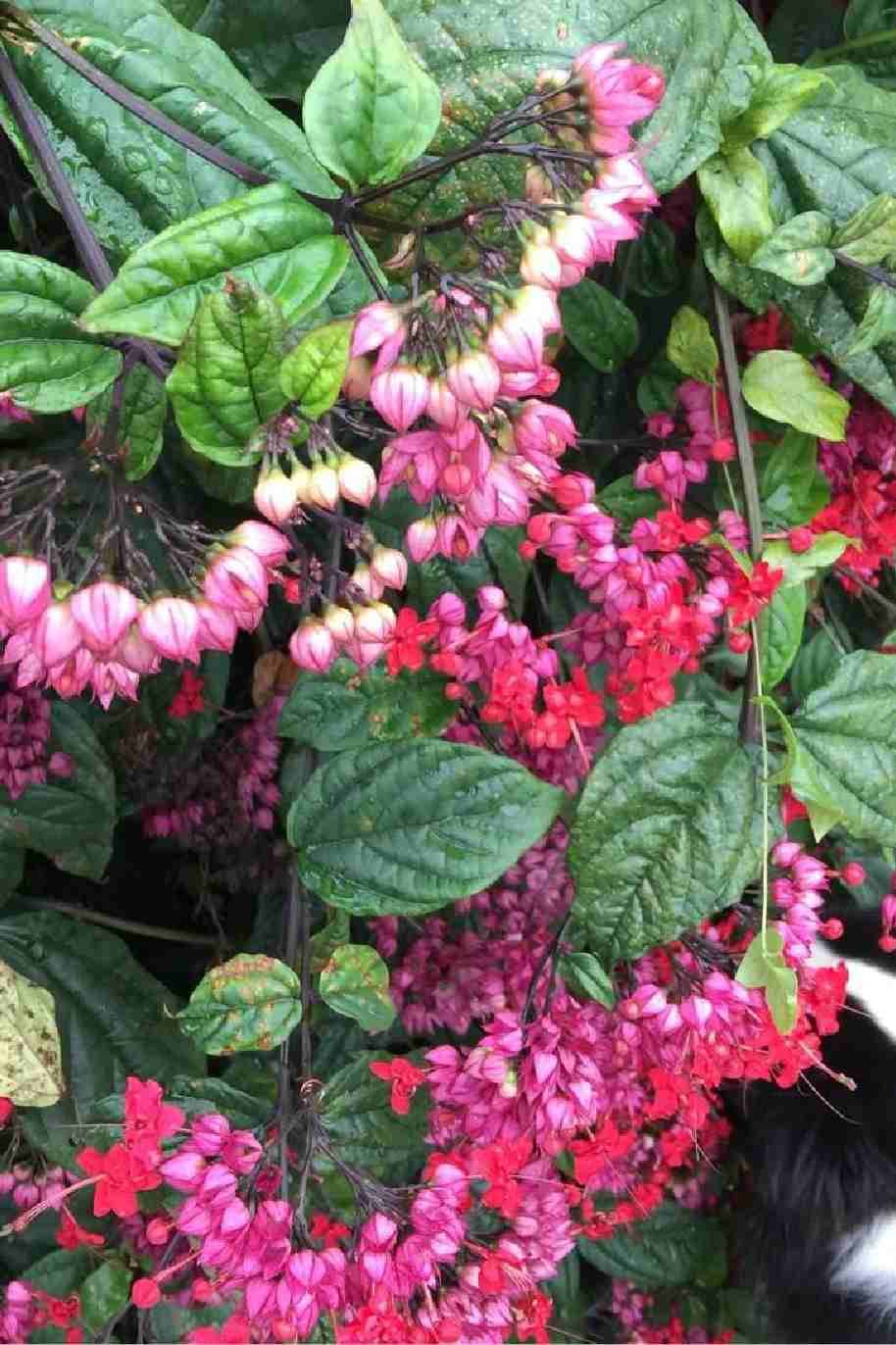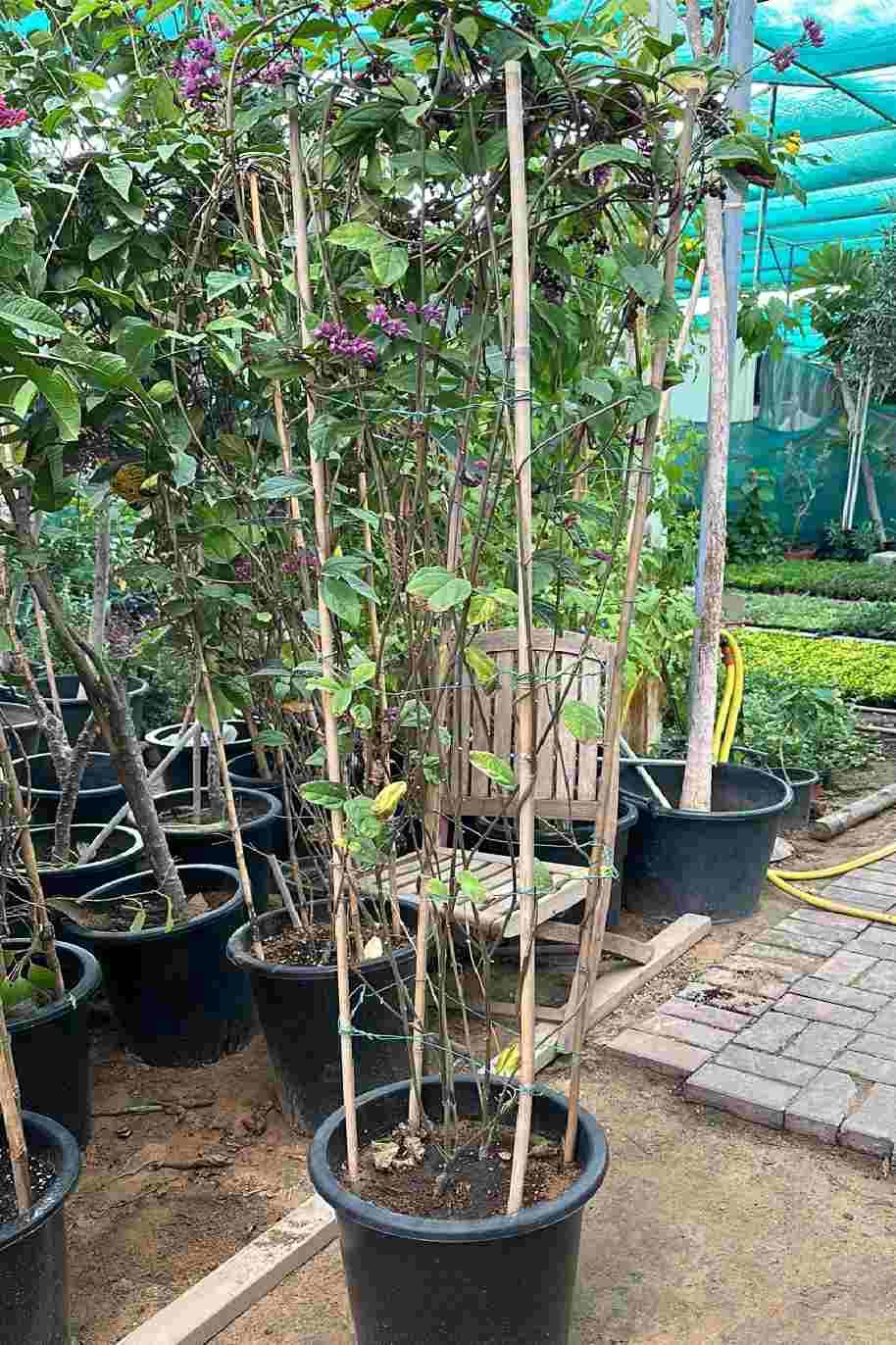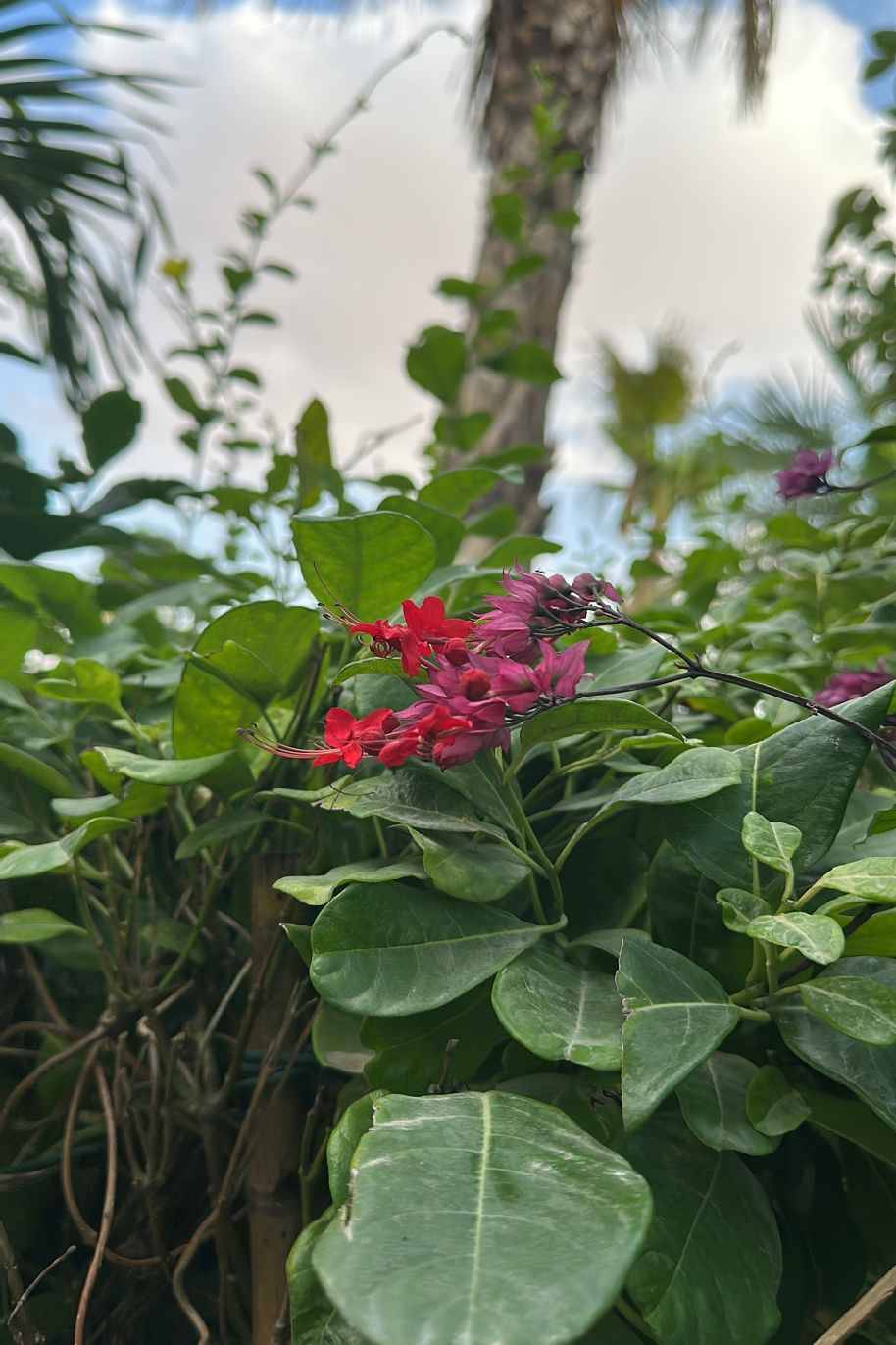Plant Bio
Clerodendrum thomsoniae, commonly known as bleeding heart vine or glory bower, is a striking tropical vine appreciated for its attractive foliage and showy clusters of flowers. Native to West Africa, it belongs to the Verbenaceae family and is popular as an ornamental plant in gardens and indoor settings. Here's a general description:
Foliage: The foliage of Clerodendrum thomsoniae consists of glossy, dark green, ovate-shaped leaves arranged oppositely along the stems. The leaves have prominent veins and may reach lengths of 3 to 6 inches (7.5 to 15 centimeters). They provide an attractive backdrop for the plant's striking flowers.
Flowers: One of the main attractions of Clerodendrum thomsoniae is its unique flowers, which appear in clusters known as cymes. Each cluster consists of numerous tubular, white flowers with red calyces that resemble hearts, giving rise to the common name "bleeding heart vine." The flowers typically bloom throughout the warm months, attracting pollinators such as butterflies and hummingbirds.
Growth Habit: As a vine, Clerodendrum thomsoniae exhibits a twining growth habit, climbing and clinging to support structures such as trellises, arbors, or fences. It can also be trained as a trailing plant in hanging baskets or containers. With proper care and support, it can reach lengths of 6 to 10 feet (1.8 to 3 meters) or more.
Care Guide for Clerodendrum thomsoniae:
Light: Provide bright, indirect light for Clerodendrum thomsoniae to encourage healthy growth and abundant flowering. While it can tolerate partial shade, it thrives in locations with plenty of filtered sunlight. Avoid placing the plant in direct sunlight, as it can scorch the leaves and cause leaf burn.
Temperature: Maintain moderate to warm temperatures for Clerodendrum thomsoniae, ideally between 65°F to 75°F (18°C to 24°C) during the day and above 60°F (15°C) at night. Protect the plant from cold drafts, sudden temperature fluctuations, and frost, as it is sensitive to cold temperatures and may suffer damage.
Watering: Keep the soil consistently moist but not waterlogged, allowing the top inch (2.5 centimeters) of soil to dry out slightly between waterings. Water the plant thoroughly when the topsoil feels dry to the touch, ensuring that excess water drains away freely from the container. Reduce watering frequency during the winter months when growth slows down.
Humidity: Clerodendrum thomsoniae appreciates high humidity levels, similar to its native tropical habitat. Increase humidity around the plant by misting the foliage regularly, placing a humidity tray filled with water and pebbles beneath the container, or using a room humidifier. Maintain humidity levels above 50% if possible to prevent leaf desiccation and promote healthy growth.
Soil: Plant Clerodendrum thomsoniae in well-draining, fertile soil with a slightly acidic to neutral pH (around 6.0 to 7.0). A peat-based potting mix enriched with organic matter such as compost or aged manure works well for container-grown plants. Ensure that the soil retains moisture while allowing excess water to drain away to prevent waterlogging.
Fertilization: Feed Clerodendrum thomsoniae with a balanced, water-soluble fertilizer formulated for flowering plants every 4 to 6 weeks during the growing season (spring through fall). Follow the manufacturer's instructions for application rates and dilution. Avoid overfertilizing, as it can lead to excessive foliage growth at the expense of flowering.
Pruning: Prune Clerodendrum thomsoniae regularly to control its size and shape, remove dead or diseased growth, and encourage bushier growth and more prolific flowering. Trim back excessively long or straggly stems, and pinch off spent flowers to promote continuous blooming. Pruning is best done in early spring before new growth emerges.
Support: Provide a sturdy support structure such as a trellis, arbor, or stake for Clerodendrum thomsoniae to climb and twine around. Secure the vines loosely to the support with soft ties or twine to prevent damage to the stems. Regularly check the ties and adjust them as needed to accommodate the plant's growth.
Propagation: Propagate Clerodendrum thomsoniae from stem cuttings taken from healthy, mature plants. Select a stem cutting with several nodes and remove the lower leaves. Dip the cut end in rooting hormone powder and plant it in a pot filled with moist potting mix. Keep the cutting in a warm, humid environment with bright, indirect light until roots develop.
Pest and Disease Control: Monitor Clerodendrum thomsoniae regularly for signs of common pests such as aphids, spider mites, and mealybugs. Treat infestations promptly with insecticidal soap, neem oil, or horticultural oil. Ensure good air circulation around the plant to minimize the risk of fungal diseases such as powdery mildew or leaf spot.
By following these care guidelines, you can cultivate a healthy and vibrant Clerodendrum thomsoniae vine adorned with its distinctive heart-shaped flowers, adding beauty and charm to your indoor or outdoor space. Adjust the care routine based on the plant's specific needs and growing conditions to ensure optimal growth and flowering.










